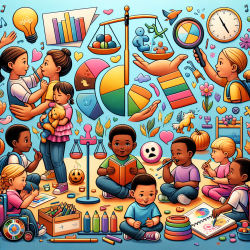As practitioners in the field of audiology and speech therapy, understanding how background noise affects speech recognition is crucial for effective assessment and intervention. The research on the Northwestern University Auditory Test No. 6 (NU-6) provides essential insights into this issue, offering a foundation for improving our practices in environments with varying noise levels.
The study focused on the list equivalency of the NU-6 in quiet and in continuous broad band noise, using 48 normal hearing young adults. The tests were administered at different signal-to-noise ratios (SINs), revealing no statistical differences in word recognition performance among lists when administered in quiet. However, significant list effects were found in noise, suggesting that background noise can alter the equivalency of speech materials.
Despite these findings, the practical impact of these differences was deemed behaviorally and clinically irrelevant due to the small size of the effect. This suggests that while the presence of noise can affect list equivalency, the overall impact on speech recognition performance might be minimal.
This research underscores the importance of considering environmental noise when assessing speech recognition. Practitioners can use these insights to refine their assessment strategies, ensuring they account for the influence of background noise on their clients' speech recognition abilities. Here are some practical applications:
- Environmental Control: When conducting speech recognition assessments, consider the testing environment's noise level. Attempt to replicate the client's typical listening environments as closely as possible.
- Test Selection and Interpretation: Choose speech recognition tests that have been evaluated for list equivalency in various noise conditions. Be cautious in interpreting results, considering the potential impact of background noise.
- Further Research: Encourage ongoing research into the effects of background noise on speech recognition tests. Continuous investigation can lead to the development of more accurate assessment tools.
- Client Education: Educate clients about the impact of noise on speech recognition and discuss strategies to manage challenging listening environments effectively.
Ultimately, the study of the NU-6 in different noise conditions offers valuable lessons for enhancing our speech recognition assessment and intervention strategies. By acknowledging the nuances of how background noise affects speech recognition, we can better serve our clients, tailoring our approaches to meet their unique needs in real-world settings.
For those interested in delving deeper into the research and its implications, I encourage reading the original study. To read the original research paper, please follow this link: List Equivalency of the Northwestern University Auditory Test No. 6 in Quiet and in Continuous Broad Band Noise.










